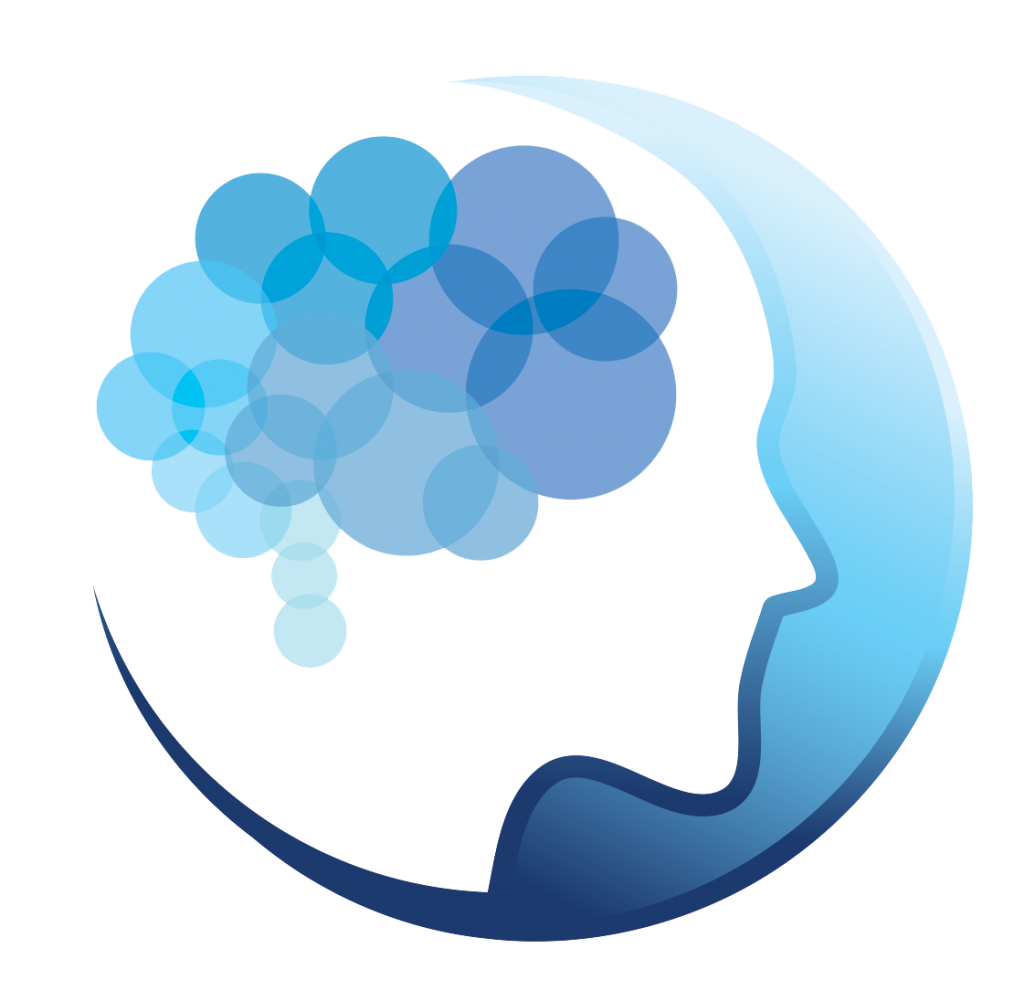Related Resources
For Havening Techniques®
What is Neurofeedback and How Can it Help with Inattention, Fogginess, and Memory Problems?
In this video Dr. Kate interviews Rebecca Turner, LMFT, one of her clinical associates who is an anxiety specialist and the lead of her Neurofeedback program. You will learn about two main topics.
First off, the concept of “Zoom Brain,” which is referencing a phenomenon that occurs when our brains are forced to only process data on a 2D plane versus the 3D/4D world around us. For example, when in video meetings with upwards of 20 people at a time, our brains have to micro-process tons of data simultaneously, and in short periods of time. This is extremely taxing for our systems, which are designed to only work with so much. In fact, our brains are generating their most powerful waves, beta waves, during times such as these.
To top it off, at the same time we are already stressed due to current events in general. This is where our Amygdala is throwing a monkey wrench into matters. We are thrust into survival mode, where “Amy” thrives best.
So what can be done to counteract/circumvent the stressed-out brain Brain? The second main topic of this interview is Neurofeedback, a technology assisted technique that helps us practice balanced/calm brain wave states, which gives our nervous system a moment to relax. What is special about Neurofeedback is that it is involuntary, our brains are passively training in the background. Brain training allows us to rewire the mental pathways of stress we’ve created, in order for us to learn how to live, thrive, and relax in multiple spaces. In turn, our body can rest and be ready to continue navigating the world.
One important distinction is made near the end of this interview, regarding the difference between Havening and Neurofeedback. While Havening can regulate our nervous system in the moment, Neurofeedback creates long-term sustainable changes in our brain.
What is especially fantastic about Neurofeedback is that it can be done remotely from home.
An Introduction to Neurofeedback with Rebecca Turner, LMFT, BCN
In this psychoeducation video, Rebecca Turner introduces us to neurofeedback, which is a way to train our brain by changing the way our brain produces electrical activity. She explains that our brains communicate through chemicals like serotonin and dopamine or through electrical activity. Neurofeedback targets the electrical patterns in our brain.
We cannot usually interact with our electrical activity in our brain. Neurofeedback acts as a music amplifier. It works by measuring data from our brain and sending that data back to our brain. This creates a unique communication feedback loop that we do not usually have access to.
Rebecca explains that neurofeedback works through utilizing sensors to gather data for analysis. It sends these signals into something called an amplifier. The amplifier allows a computer program to analyze the brain waves. The computer identifies when our brain makes certain types of electrical activity connected to better cognitive function, physiological regulation, and emotional balance.
When our brain is making balanced brain wave patterns, the computer signals to our brain by making the screen brighter or the music louder. This process repeats over and over in response to what our brain is doing. Our brain links together what activity produced the brighter screen or louder music. It learns to create that activity more sustainably, this is known as operant conditioning. We like to see a screen or hear music clearly, so when our brain gets that reward, it becomes more likely to recreate and sustain that brain activity.
Rebecca explains that neurofeedback helps our entire brain become more balanced, and it can be beneficial for a variety of people!
The Differences Between EMDR and Neurofeedback
In this TikTok video, Dr. Kate Truitt explains the difference between eye movement desensitization and reprocessing—a psychosensory trauma reprocessing tool—and neurofeedback, which is used to train the brain using operant conditioning.
Neurofeedback: Training for Your Brain
By Dr. Kate Truitt
Do you find that you have problems with attention span and concentration? Or memory function or motor skills such as fine motor control or balance? Do you often have trouble regulating your moods and/or emotions? Do you suffer from insomnia? The brain produces electrical signals when it is processing information, so having these challenges may mean that you are like many people we see that experience difficulty modulating those signals.
Neurofeedback assesses, trains and refines your brain's electrical activity

In our practice we have something that may be able to help with all of that. It’s called neurofeedback—a technology that uses real-time feedback to assess, train and refine the brain’s electrical activity.
Fortunately for us, our brains are malleable, flexible, and trainable, thanks to the power of neuroplasticity, which I write about frequently in this blog. With neurofeedback we can all become self-trainers and do our own daily work to create our most resilient brain.
In order to explain what neurofeedback is and how it works, in this article I have the help of the wonderful work of Rebecca Turner, LMFT. She is a licensed psychotherapist and specializes in neurotherapy. Rebecca is the head of the Dr. Kate Truitt & Associates’ Neurofeedback Program and is Board Certified in Neurofeedback through the Biofeedback Certification International Alliance (BCIA). Her work focuses on the integration of psychotherapy, mindfulness, breathwork, and biofeedback to support and treat people navigating heighted emotional and sensory sensitivity, chronic illness and pain, and traumatic experiences.
Neurofeedback Defined
When Rebecca introduces our clients to neurofeedback, she asks them to think of it as a way to train their brains, making it different from psychotherapy or coaching, which are designed to provide them with valuable skills, tools and insights to put into practice in their life to make it better. She explains that with neurofeedback you are changing the way your brain is producing and optimizing its electrical activity to make it work better. She emphasizes that both psychotherapy and neurofeedback are very powerful healing modalities, and they complement each other well.
“To really understand the difference between the two,” Rebecca says. “I like to use the metaphor of soccer. To be good at soccer, you need two primary things. The first is skills, knowledge of how the game of soccer is played and how to make quick decisions to work with your team effectively, and ultimately to help you win. The second thing you need is the physical conditioning and stamina developed in your workouts, to be able put those skills to practice. Think of psychotherapy and coaching as the skills, and neurofeedback as the conditioning.”
This method of training the brain has several unique benefits. Neurofeedback…
- allows you to monitor your own brain activity while exercising control over it,
- makes that information available for you to learn from so you can improve over time,
- may be used to treat a range of psychological, neurological and psychiatric disorders,
- has been shown to be helpful for attention-deficit/hyperactivity disorder (ADHD) as well as anxiety, depression and post-traumatic stress disorder (PTSD) by helping people with these conditions develop better self-regulation skills, and
- can also be used in wellness and performance-enhancement plans.
What are the Processes of Neurofeedback?

Let’s look at how neurofeedback works. First we need to understand that our brain communicates in two main ways: through chemicals like serotonin and dopamine and through electrical activity. This is why neurofeedback differs from the pharmacological therapy we use in treating psychological disorders. Medications target the chemical messengers in our brain, while neurofeedback focuses on the electrical patterns there.
The electrical activity in our brains is very subtle. Rebecca likens it to music—something we can all relate to. “It’s like music that’s on an extremely low volume,” she says. “It’s there, but the volume is just too low for us to hear. Usually our brain’s electrical activity is not something we can directly interact with, because the music is on too low. That’s what makes neurofeedback special. It acts as an amplifier, allowing us to ‘turn up the volume’ on our brainwaves so that we can do something with them.”
Neurofeedback is a type of biofeedback, which is defined as “the process of gaining awareness of physiological processes and making changes in them, usually by self-regulation.” Biofeedback works by providing real-time feedback on your body’s physiological processes such as heart rate or muscle tension through machines connected to sensors placed on your skin. For example, if you are learning how to control your blood pressure with biofeedback then you will see numbers displayed on a computer screen showing how high or low it is at any given moment in time during a given exercise.
Neurofeedback differs from other forms of biofeedback because it doesn’t involve direct measurement but makes use of indirect measures such as electroencephalography (EEG) recordings from electrodes placed on specific locations on the scalp along with other imaging techniques like magnetic resonance imaging (MRI) scans, which provide information about activity levels within different parts of our brains over long periods of time.
Neurofeedback works through operant conditioning, which is using rewards and punishments to modify your behavior. In this kind of operant conditioning we measure brainwave activity. The model my team uses is called New Mind Maps. We create a brain-training protocol based on a clinical exam and on the data gathered from a qEGG (quantitative electroencephalogram), which takes about 30 to 40 minutes. This data is analyzed to find clinically significant outliers within your brainwaves. It is these outliers that are often associated with symptoms such as low mood, lack of motivation, inability to focus, anxiousness, brain fog, and more. With consultation between the client and the practitioner it is typically these outlier frequencies that become the targets for neurofeedback training.
In a recent video, which you’ll find in the sidebar of this article, Rebecca explains further. “There are two parts to how Neurofeedback works,” she says. “First, it measures data from our brain, and then sends that data back to our brain, creating a communication loop that we don’t normally have access to. When neurofeedback is taking information from our brain, it’s using special sensors on your scalp that are able to pick up the extremely subtle electrical signals your brain is making. It sends these signals into something called an amplifier, which allows a computer program to analyze your brainwaves, basically acting like turning up the volume on a speaker.”
In the process a trained clinician places a cap with 20 electrodes on the head. Through the use of a sophisticated software program, the client will then be able to read how their brain is functioning in those electrode locations while watching Netflix or a meditation video or listening to music. As they watch the screen or listen to the music, the electrodes send information back to the brain through a visual or auditory stimulus when brainwaves are in the targeted frequency. The computer program is then able to identify when your brain is making certain kinds of electrical activity connected to better cognitive functioning, physiological regulation and emotional balance.
The reward in this operant conditioning comes from you being able to see a screen more clearly or hear music better. When the computer program identifies that your brain is making balanced optimized brainwave patterns, which it does organically, it signals to your brain by making the screen that you’re watching become brighter, or the music that you’re listening to get louder based on how your brain is functioning. If your brain is operating at the level that we want it to be attaining, then you are rewarded through being able to watch the show successfully or hear the music better. If your brain slips into old, less-than-preferable patterns of functioning, then the screen gets darker and darker and darker or the music gets lower and lower, making the rewards go away.
Through neurofeedback brain waves are being trained in the desired direction through rewards generated by changes in the audio/visual stimulus. Over time and through its natural bent toward regulation, the brain can retrain itself to function within optimal frequencies, thus reducing symptoms. This is what we mean by New Mind Maps—your brain is making new neural connections to more preferable places.
So, with neurofeedback we are taking advantage of an evidence-based treatment that uses brain training to improve the brain’s ability to self-regulate. Our brain is very pattern-focused and so if we have ADHD or if we have experienced trauma over the course of our lives, our brain develops specific patterns of electrochemical or brainwave functioning. Neurofeedback is a powerful tool to help reestablish the norm that we would like your brain to have or to train it to operate in new ways. This non-invasive treatment can help people with PTSD and other stress and anxiety disorders decrease their symptoms over time. It can also help them become more resilient and better able to cope with the stressors in their lives, as well as learn how to regulate their emotions.
Not only is neurofeedback an exciting new tool for mental health, it is also used as a therapy for mental wellness as well as performance enhancement in athletics and other areas where sharp mental focus is key. The plasticity of our brains means they have the potential for positive change and growth that we can help drive. Neurofeedback has been found to be beneficial for many people. It helps their brain make strides toward becoming its best self in a way that is long-lasting and sustainable.
You deserve to live your most fulfilled life. Go to our Neurofeedback and Biofeedback Page to learn more about our neurofeedback services.










